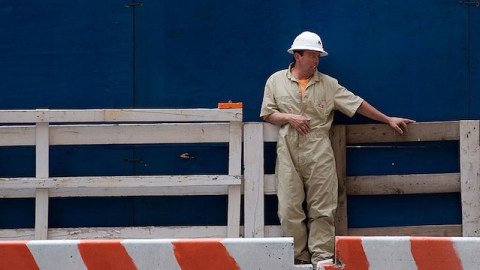The Lost Decade for American Workers

Just about everyone realizes how bad the economy has been over the last few years. What most people don’t realize is that for most Americans the economy began to stagnate well before the financial crisis. While per capita income in the U.S. grew through the start of the financial crisis, in practice almost all that growth in income went to top earners. But for average Americans economic conditions have been stagnant for the last decade.
As I wrote last year, economically the last ten years were a lost decade. It was, as Paul Krugman put it, a “Big Zero.” As Ezra Klein pointed out at the time, the American economy added virtually new no jobs in the first decade of the 21st century. Even before the financial crisis we created far fewer jobs than in any decade since the Great Depression, a fact that was partially obscured by the fact that many Americans were dropping out of the workforce. At the same time, real wages grew just 4.2% over the last ten years—even lower than during the Great Depression and far lower than the at least 25% they grew over every decade since. And when home values and stock prices fell, it wiped out a substantial portion the U.S. national net worth, making it the only decade for which data is available in which the net worth of the average American household actually declined.
For ordinary Americans the economy has been even worse than some of those numbers suggest. For various reasons—including globalization, tax policy, and the rapid growth of the financial sector—the incomes of top earners have been increasing while the incomes of the median American has barely grown at all. As a result, Americans who get paid the most have over the last thirty years been getting a larger and larger share of national income, so that what little growth the U.S. had went almost entirely to the wealthiest Americans.
Now, as Jared Bernstein says, new census data shows that real median income has fallen 7% since it’s peak in 1999—$3800 in 2010 dollars. That decline has been even more dramatic for the median working-age American household, which doesn’t get government support in the form of Social Security or Medicare and has seen its real income fall nearly 10%. The Center on Budget and Policy Priorities shows that at the same time more working age Americans had to pay for their own health care as fewer got health care benefits from their employers. The poverty rate also went up throughout the decade, with the number of Americans who make less than half of the poverty jumping up to a record 7%.
Ordinary Americans didn’t suddenly become lazy or unproductive. Nor are their struggles simply a consequence of the recession, since they started before it began. Instead, the average American has been the victim both of long-term trends beyond their control and government policies that cut social support programs and weaken labor unions. And without structural change, ordinary Americans will continue to struggle even after the overall economy finally begins to grow again.
Photo credit: Jorge Royan





